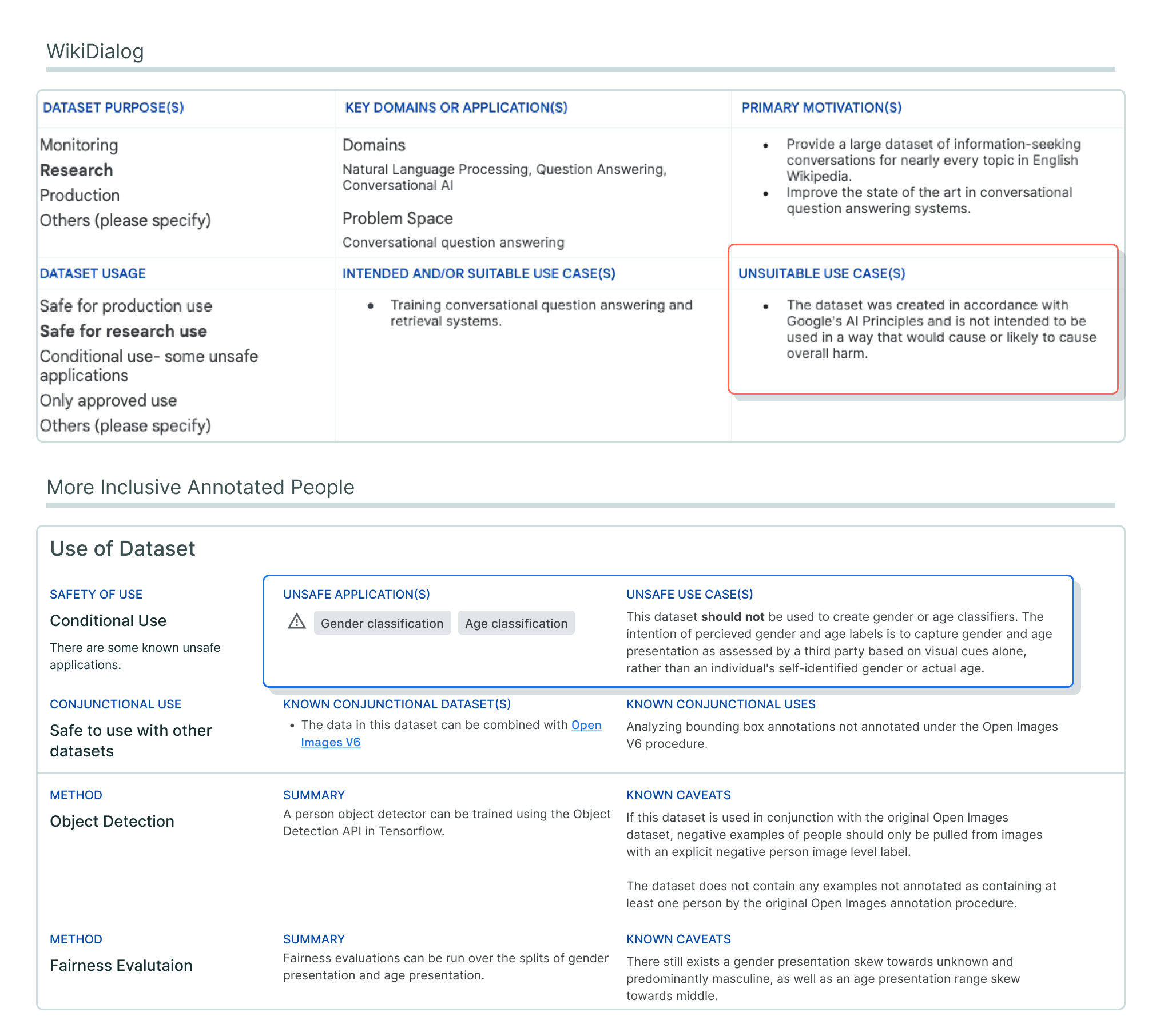Reader-induced assumptions, along with other missing or unknown information can create a fragmented and underwhelming reading experience. Adding cues and context across your Data Card can help readers establish a more accurate understanding of your dataset.
Readers are not always going to know the original questions that were answered, or those that were left out. Without the necessary context to interpret results and claims correctly, readers can fill in the blanks with assumptions, which is counter to informed decision making.
Context supports accuracy in interpretation and reproducibility.
Surface the underlying qualitative and anecdotal assumptions, conditions of analysis, seeds, alternative considerations, and any other justifications that could have changed the results of the analysis. This will support reproducibility of analyses, enhance readers’ understanding of the results and can set the stage for future research and investigations.
Documentation that is objective (such as the statistical attributes of labels in a dataset) is often easier to document than subjective (such as the labeling instructions or policies) or speculative (such as potentially unsafe uses of labels). However, easier to document doesn’t guarantee accuracy in understanding. Help readers parse objective information by providing supportive implicit context, and vice-versa.

An answer should clearly reflect the question asked.
Readers should be able to infer the questions that you are trying to answer from your content without re-writing the question. This is of particular importance if your Data Card does not have any visual or formatting cues (such as subtitles, or headings) that organize answers.
A good rule of thumb is that a reader should be able to convert an answer back to its original question with minimal deviations. Alternatively, introduce cues that readers can use to understand and contextualize your responses.
